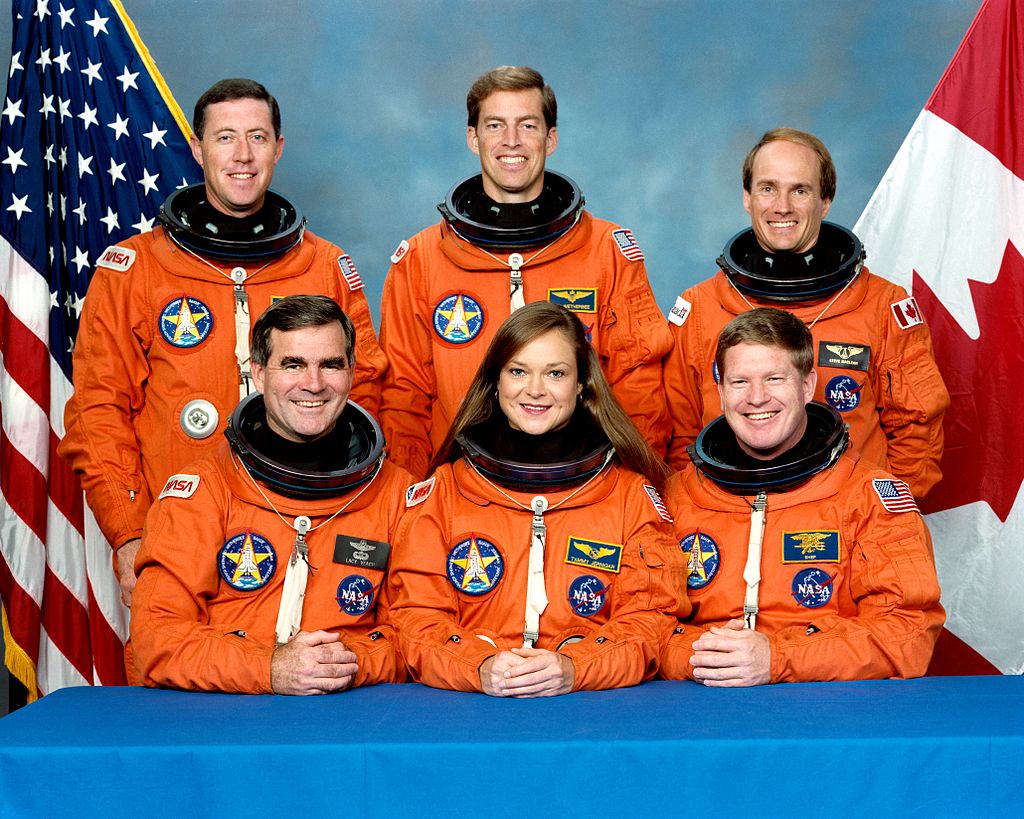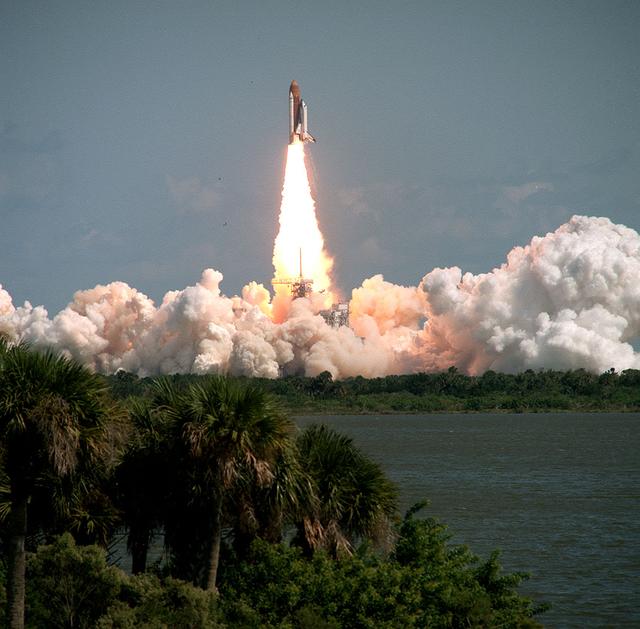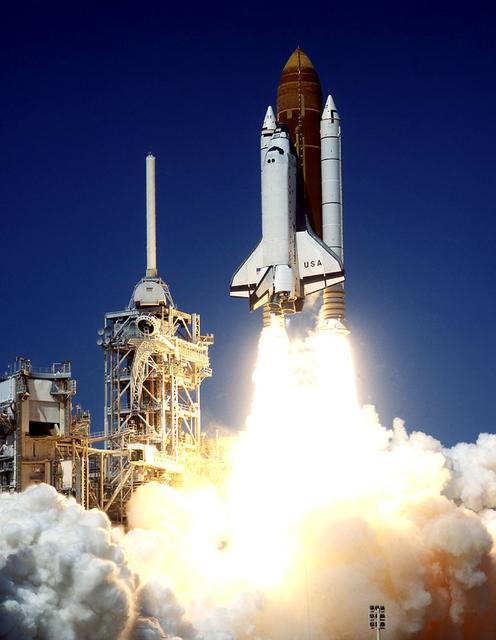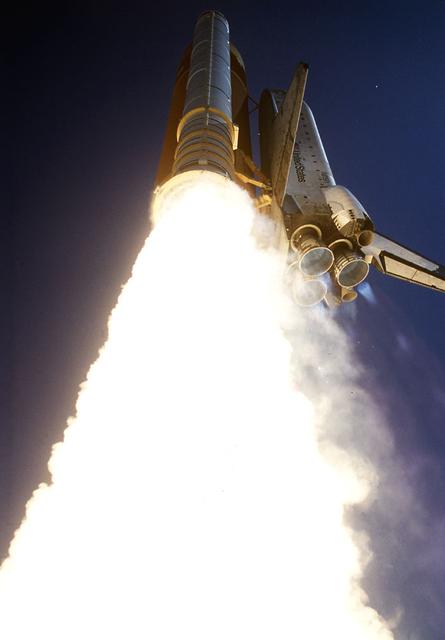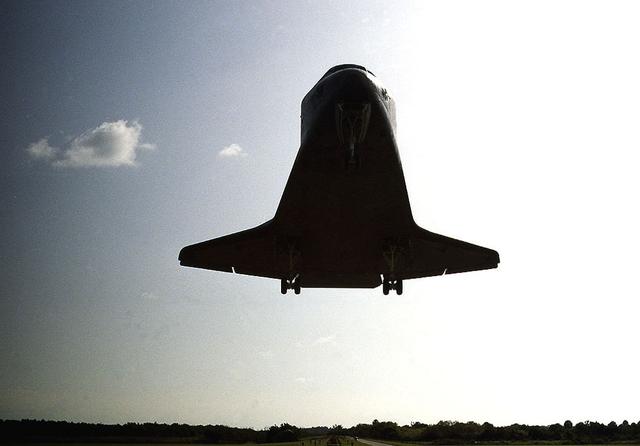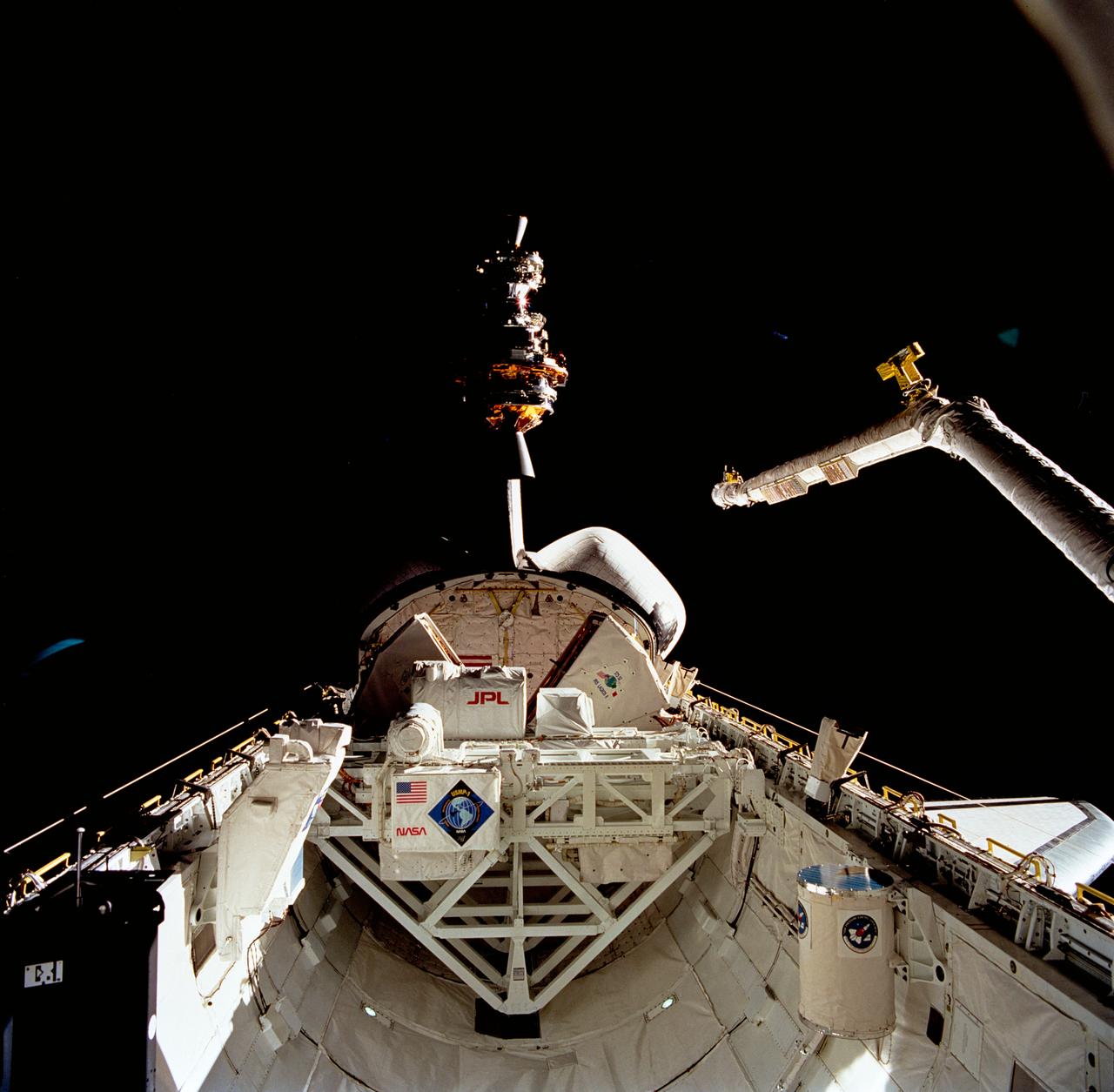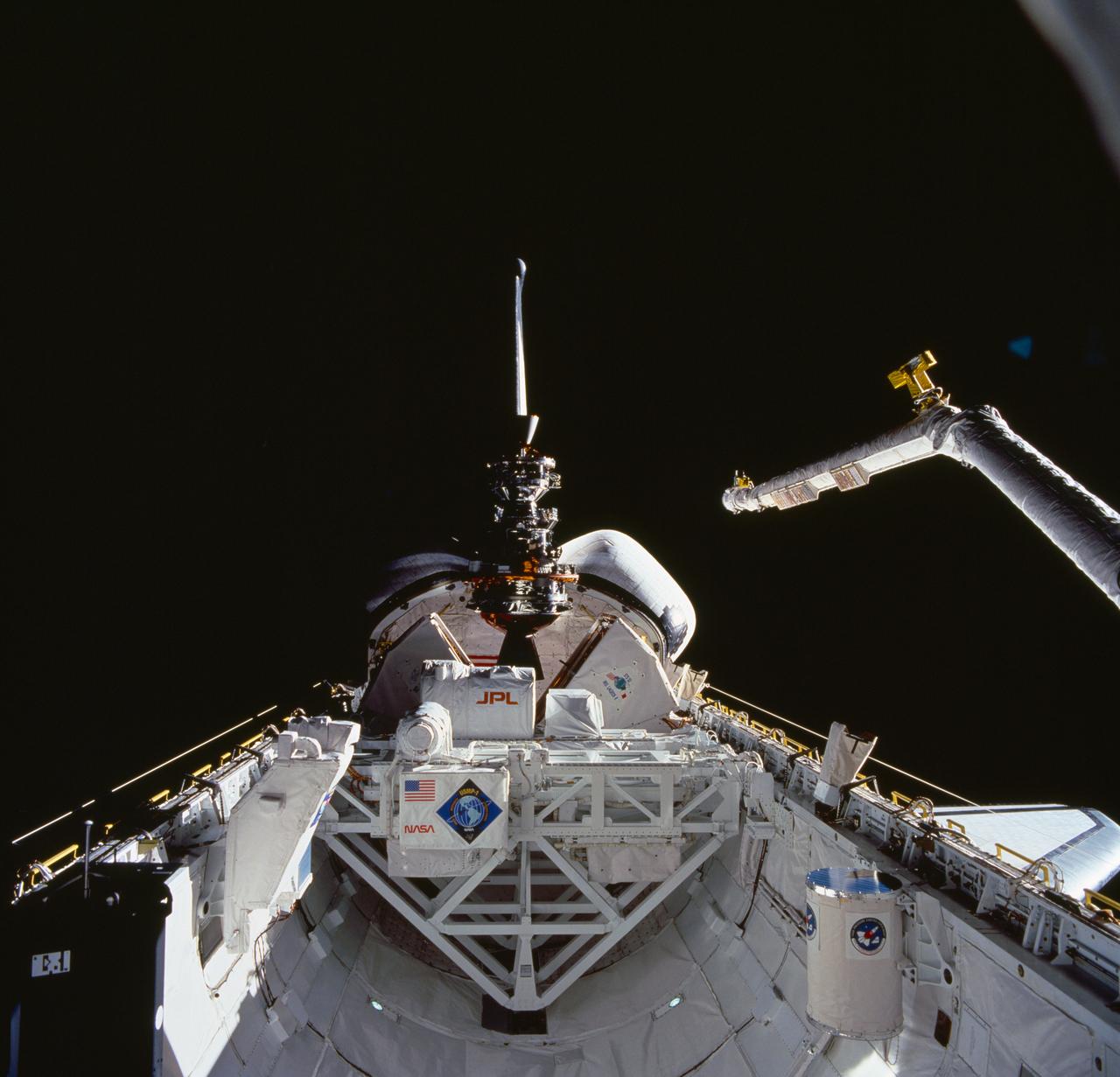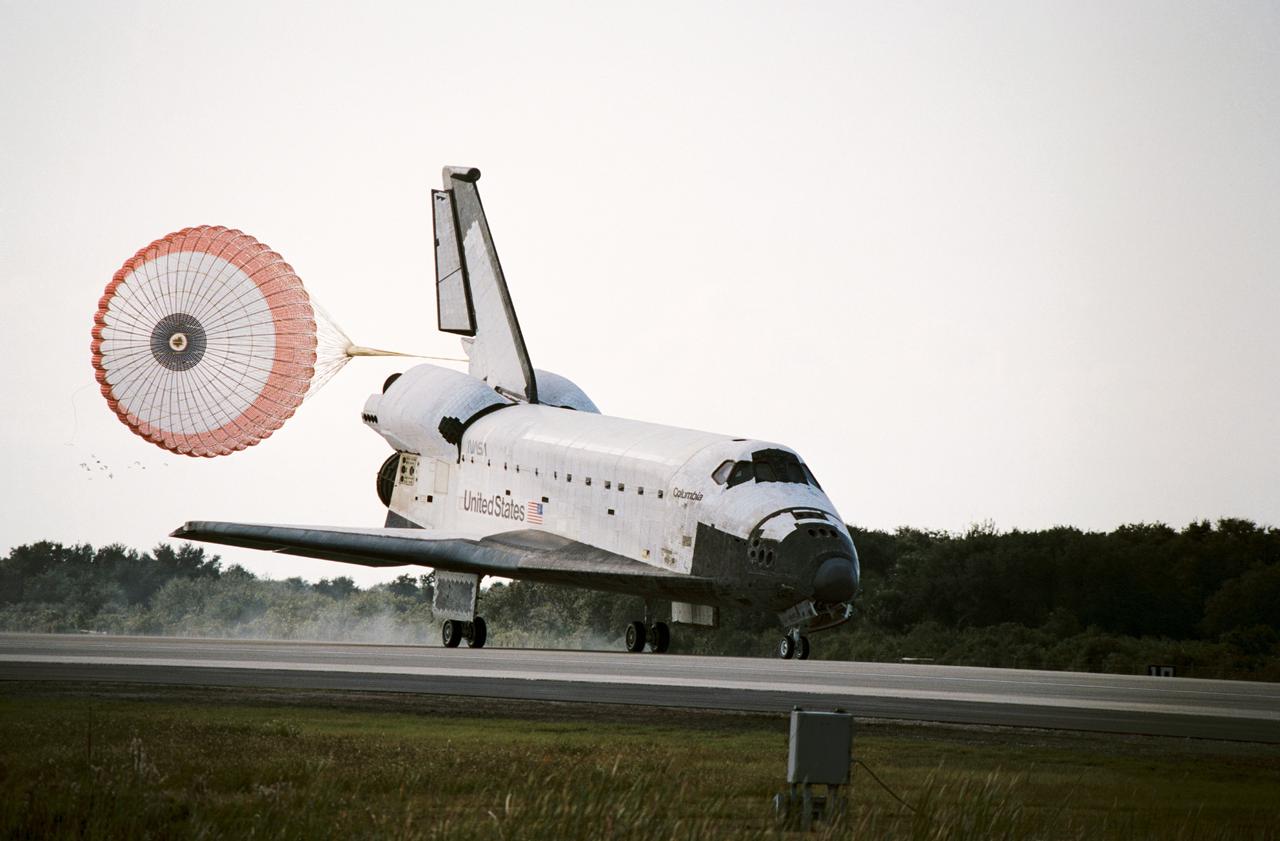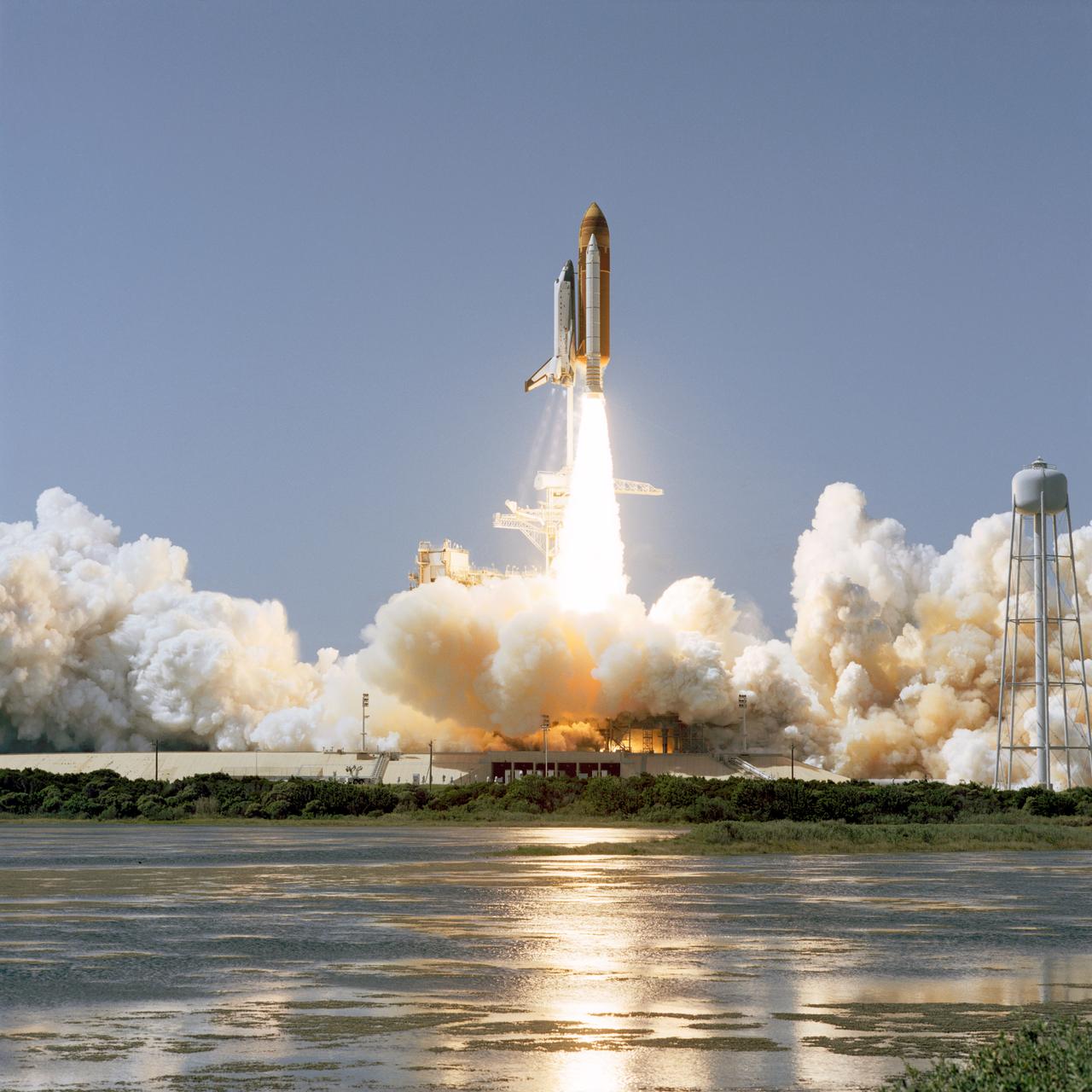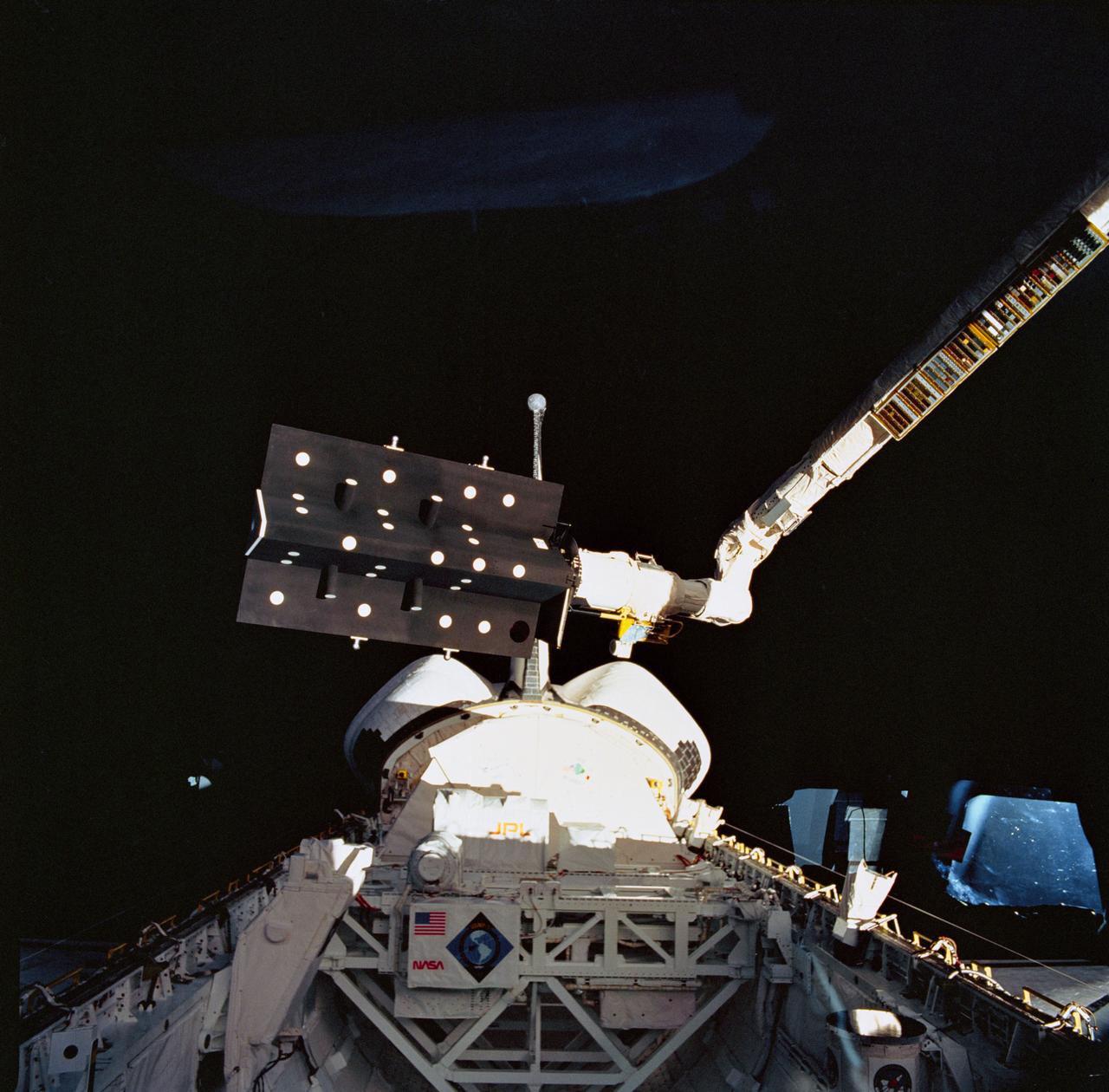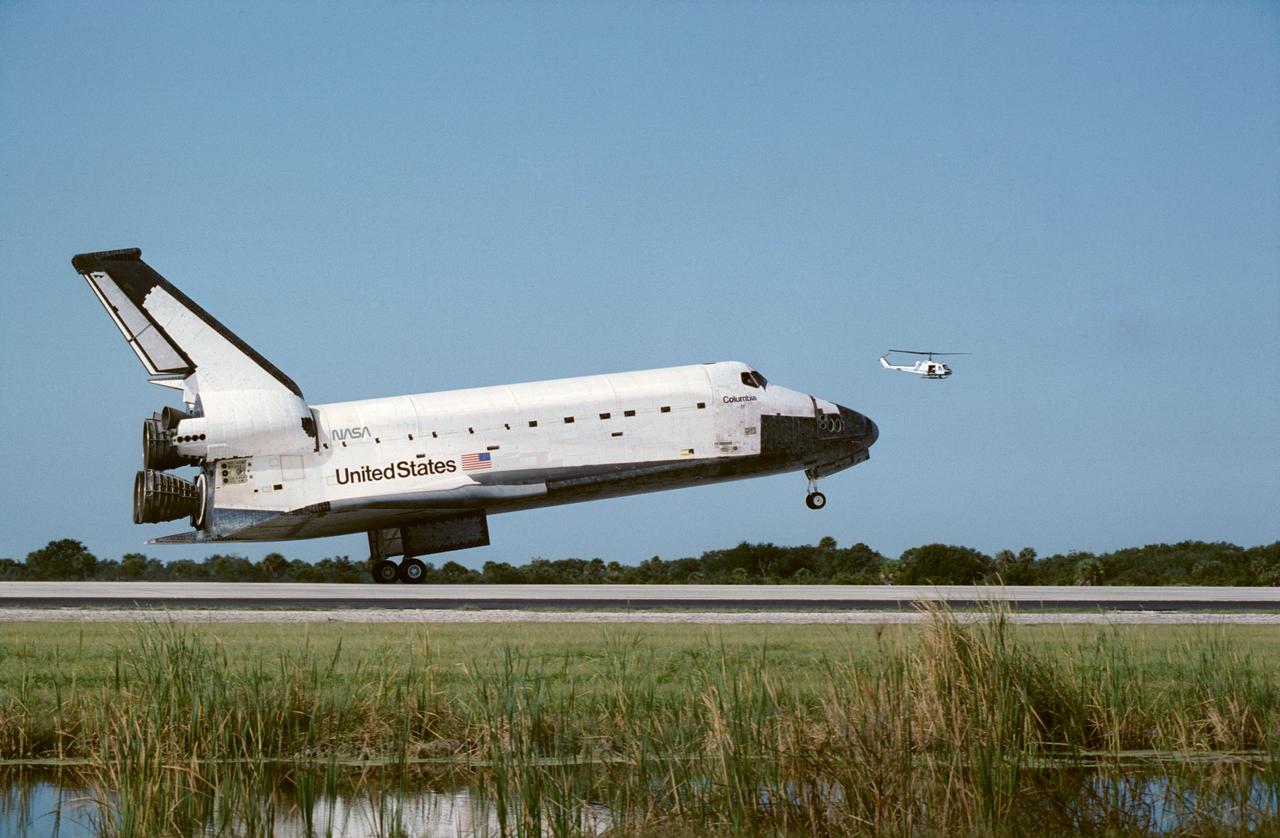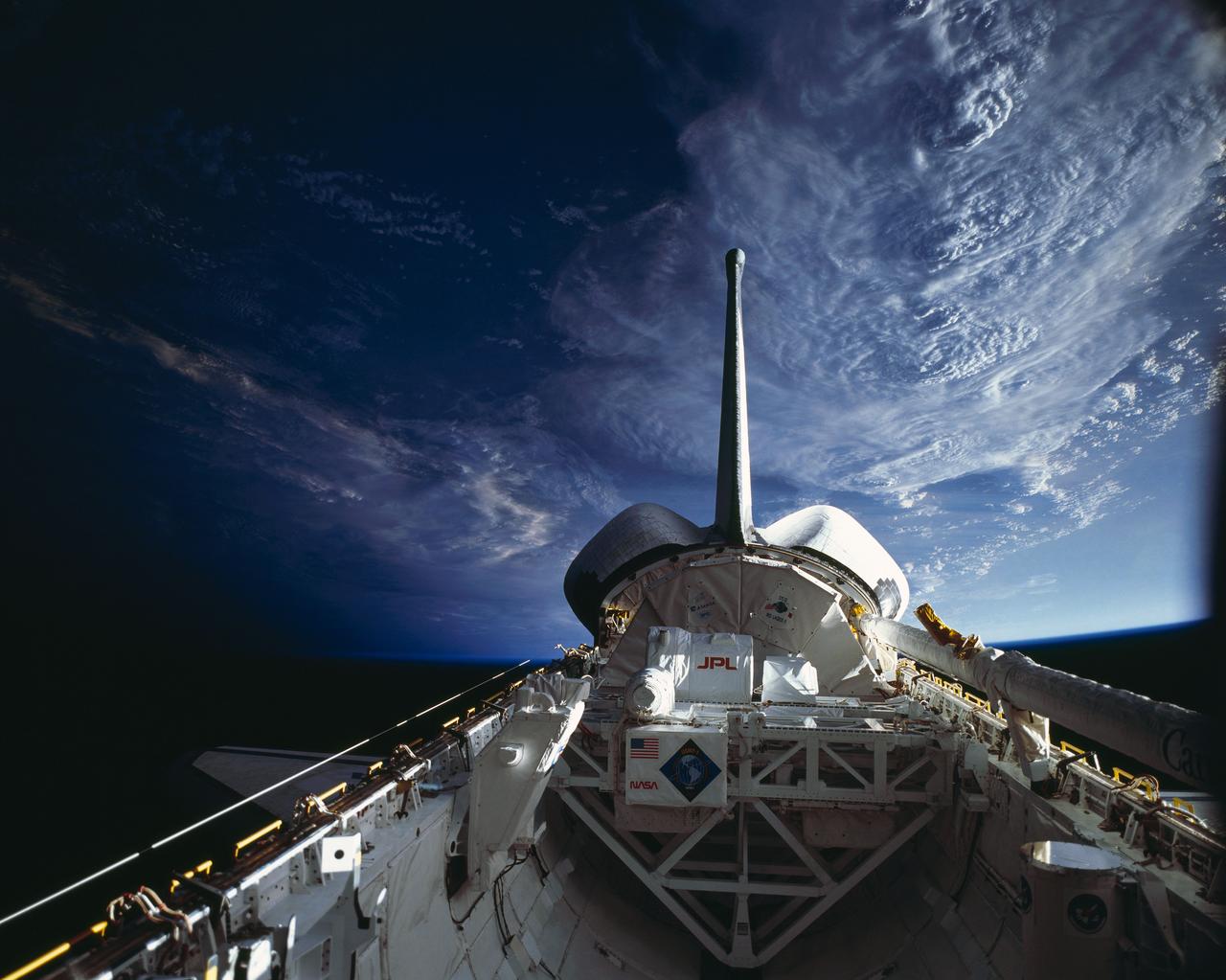STS-52 Fact Sheet
By Cliff Lethbridge

STS-52 — Columbia
51st Space Shuttle Mission
13th Flight of Columbia
Crew:
James D. Wetherbee, Commander
Michael A. Baker, Pilot
Charles Lacy Veach, Mission Specialist
Tamara E. Jernigan, Mission Specialist
William M. Shepherd, Mission Specialist
Steven A. MacLean, Payload Specialist
Orbiter Preparations:
Tow to Orbiter Processing Facility – July 10, 1992
Rollover to Vehicle Assembly Building – September 20, 1992
Rollout to Launch Pad 39B – September 26, 1992
Launch:
October 22, 1992 – 1:09:39 p.m. EDT. Launch had been scheduled for mid-October, 1992, but was delayed due to a decision to change out Main Engine Number Three.
Concerns were raised about potential cracks in the liquid hydrogen coolant manifold on the engine nozzle. It was decided that changing out the engine would consume less time than X-ray analysis of the suspect engine area.
October 22 launch was delayed just less than two hours due to unacceptable crosswinds at Kennedy Space Center and transoceanic abort landing areas.
Landing:
November 1, 1992 – 9:05:52 a.m. EST at Runway 33, Kennedy Space Center. Rollout distance was 10,708 feet. Rollout time was 63 seconds. Mission duration was 9 days, 20 hours, 56 minutes, 13 seconds. Landing occurred during the 159th orbit.
The drag chute was deployed after nosegear touchdown for additional test data following apparent landing difficulties encountered during STS-47 operational drag chute deployment.
Mission Summary:
Primary objectives were the deployment of the Laser Geodynamic Satellite II (LAGEOS II) and operation of the U.S. Microgravity Payload-1 (USMP-1).
LAGEOS II was deployed and boosted too an elliptical orbit using an Italian Research Interim Stage (IRIS). LAGEOS II, a joint venture of NASA and the Italian Space Agency, was later transferred to a circular orbit of 3,666 nautical miles using a perigee kick motor.
USMP-1 included three experiments. Secondary payloads included the Canadian Experiment-2 (CANEX-2), containing a variety of experiments, including Space Vision System (SVS) which employed a small, specially marked satellite called Canadian Target Assembly (CTA), deployed during the mission.
Also in the cargo bay was the European Space Agency Attitude Sensor Package, including the Modular Star Sensor, Yaw Earth Sensor, Low Altitude Conical Earth Sensor and Tank Pressure Control Experiment/Thermal Phenomena (TPCE/TP).
Additional payloads included the Commercial Materials Dispersion Apparatus Instrument Technology Associates Experiment (CMIX), Commercial Protein Crystal Growth Experiment (CPCG), Chemical Vapor Transport Experiment (CVTE), Heat Pipe Performance Experiment (HPP), Physiological Systems Experiment (PSE) and Shuttle Plume Impingement Experiment (SPIE).
During the flight, Columbia was used as a calibration target for the Ultraviolet Plume Instrument (UVPI) located on an orbiting Strategic Defense Initiative Organization (SDIO) satellite.
SELECTED NASA PHOTOS FROM STS-52
